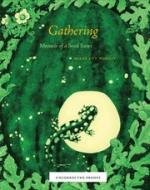

While it is not actually an edible plant, Russian Comfrey is one of the most versatile plants in the kitchen garden, especially for the organic gardener as a source of potash-rich organic material and liquid feed. It has many uses:
It is quite a different plant from Wild Comfrey. (Symphytum asperum) Russian Comfrey (Symphytum x uplandicum) is a hybrid and is sterile so does not freely seed; Wild Comfrey is a great nuisance in this respect and we do not recommend that it is planted and used as an alternative.
The value of comfrey lies in its composition. The roots bring up potassium, phosphate and other minerals from deep in the ground, and the leaves are also high in nitrogen. As a percentage of dry matter, comfrey contains:
That is 2-3 times more potassium than farmyard manure, which makes it especially good for the production of flowers, fruits and seeds. The high nitrogen means that comfrey can be used as a surface mulch or dug into soil with no worries about robbing soil nitrogen, as so often happens with green manures in the short term.
The leaves can be cut 4 to 5 times a year. Through the summer, as soon as a good crop of leaves is produced is a good time to cut it. It is best to leave the last cut no later than early September to allow the plants to build up a bit before winter.
Potatoes etc.Without any extra effort it is possible to use comfrey on potatoes and as a compost activator. If you dig a trench for maincrop potatoes, line the trench with the first cut of leaves. Cover that with a thin layer of soil and then proceed as normal. The same technique can be used for runner bean trenches, and in planting holes for tomatoes. The comfrey breaks down, feeding the plants and improving the structure of the soil.
For no-dig potatoes, put the comfrey over the potatoes and then cover with a mulch of hay, grass or whatever.
Later in the season, use comfrey as a surface mulch, especially around tomatoes and peppers, aubergines. Cut the leaves and lay them, fresh, around the plants. As they break down they release their nutrients and also help to suppress weeds and prevent splash-borne diseases. At the end of the season, the remains can be turned in or removed, with other debris, to the compost heap. A layer of grass clippings above the comfrey in a mulch helps to save water and speeds decay.
Do not attempt to compost a large quantity of comfrey on its own because it is too low in carbon and rots down to a liquid sludge. But it makes a brilliant activator. Layers of comfrey about 8cm thick in the heap will encourage decomposing organisms and help to heat it up. The heap absorbs the liquid.
This is probably the most popular way to use comfrey. It is easy and efficient, because there is no loss of nutrients through leaching. Also, the nutrients are immediately available to plants. There are two methods for turning comfrey into liquid fertilizer:
1. Comfrey Tea
Put comfrey leaves and water into a container and allow the mixture to stand for 4 or 5 weeks. The result is a ready-to-use comfrey tea that can be watered directly onto plants. About 7kg of comfrey in 100 litres of water is the right proportion.
This method is good if you only want a small amount of comfrey feed at any time. The trouble is that it is rather smelly and the liquid does not store well. It is also very bulky in large quantities.
2. Comfrey Concentrate
This is made by stacking leaves alone in a container, preferably with a weight pressing down on the leaves. The comfrey decomposes slowly to a thick brown liquid which is then diluted before watering onto plants. The HDRA recommends diluting at 15:1 and feeding tomatoes or peppers in pots three times a week, greenhouse borders twice a week, and pot plants and hanging baskets outdoors once a week. You may prefer to dilute less and feed less often, or give a much more dilute feed with every watering.
It is impossible to give precise instructions for building a system to make either comfrey tea or concentrate. Essentially any container can be used: a waterbutt with a tap, old cold water cistern. You need a tap to draw off the liquid if you are making tea, and a small hole that drips permanently into a container for concentrate. A lid is useful for keeping out rain, insects, and the smell.
Potting MixturesYou can make a good all-purpose potting mixture by mixing well-rotted leaf mould, preferably two years old, and chopped comfrey leaves. In the autumn, using a dustbin or strong plastic sack, place alternate layers of chopped comfrey leaves. The layers should be about 10cm thick, and if the leaf mould is very moist allow the comfrey to wilt first.
Leave the heap for between two and five months, checking every now and again that it is neither too dry nor too wet. It should ooze a little liquid if squeezed very hard. The mix is ready when the comfrey leaves have rotted down completely. This makes a good all-purpose medium, but you may need to boost it for demanding plants, and dilute it for sensitive seedlings.
Bees love Russian comfrey. Even though it is quite sterile and will not make a nuisance of itself like Wild Comfrey tends to, the flowers are packed with pollen and nectar and are irresistable to bees. You need to cut the plantsless frequently for their leaves if they are to flower.
A good comfrey bed is going to last upwards of 20 years, at least, so it makes sense to give some thought to its situation and preparation.
Given that, waste is simply a resource in the wrong place. Compost heaps leach nitrates to the soil. Comfrey needs nitrates, so a good idea is to situate the comfrey around the edge of your compost bins. That way the comfrey captures and stores the leaching nitrates, and it is close by the compost for activating the heap.
If you plan to be using a lot of comfrey for liquid fertilizer, put the bed as close to where you want to use it as possible. With each plant producing several kilograms per cut, you do not want to have to carry the leaves a great distance.
How many plants you need depends on the size of your garden. As a rule, the HDRA suggests that for an allotment or largish garden, 15-30 plants will provide plenty of comfrey for different uses. A small to medium garden will need anything from 4 to 8 plants. Bear in mind that it is considerably easier to expand your bed than get rid of plants.
Propagation of this herb is simplicity itself: chopping off a plant horizontally with a sharp spade will provide plenty of offsets and the root will regrow.
Getting rid of comfrey is more problematic. Whatever you do, don't be tempted to rototil it, you'll just chop up the roots and produce a forest of small plants. Unless you repeat the process regularly you will make no impact.
But we're truly confident that once you have experienced the benefits of Russian Comfrey, you won't want to get rid of it.


 The food industry's digusting secrets exposed. How to protect yourself.
Click Here!
The food industry's digusting secrets exposed. How to protect yourself.
Click Here!
Discover how to easily build an attractive and affordable greenhouse that will grow anything in any conditions. Also, building your own greenhouse just makes economical sense. You can build a greenhouse at just a fraction of the cost of buying a pre-built one. Most pre-built greenhouse you buy need to be assembled anyway, you are really just paying hugely inflated prices for the material.

Daughter of Iowa farmers, Missouri homesteader, and mother of five, Diane Ott Whealy never anticipated that one day she would become a leader in a grass-roots movement to preserve our agricultural biodiversity. The love for the land and the respect for heirloom seeds that Diane shared with her husband, Kent Whealy, led to their starting Seed Savers Exchange in 1975. Read More...
